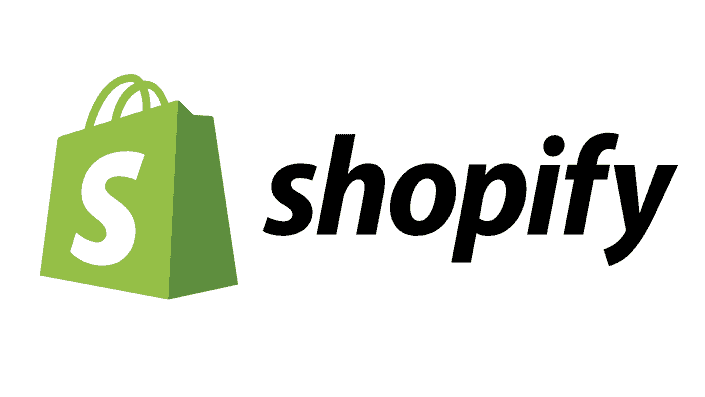
If you are a business owner wanting to get into e-commerce, Shopify is an excellent way to start your store. Much of this comes from the robust Shopify app store, which offers many tools to meet many needs. Many apps come from third parties, but the Shop App is a Shopify original.
Below is a review of the Shop App’s features, including a closer look at how it integrates with ChatGPT.
What is the Shopify Shop App?
The Shop App is an optional application you can install on your Shopify store. It is built by Shopify for Shopify, meaning it received direct support from the large e-commerce support platform.
The Shop App’s primary benefit is to be found on the customer-facing mobile application, also known as Shop. This lets customers browse an integrated marketplace of multiple Shopify stores, similar to Amazon.
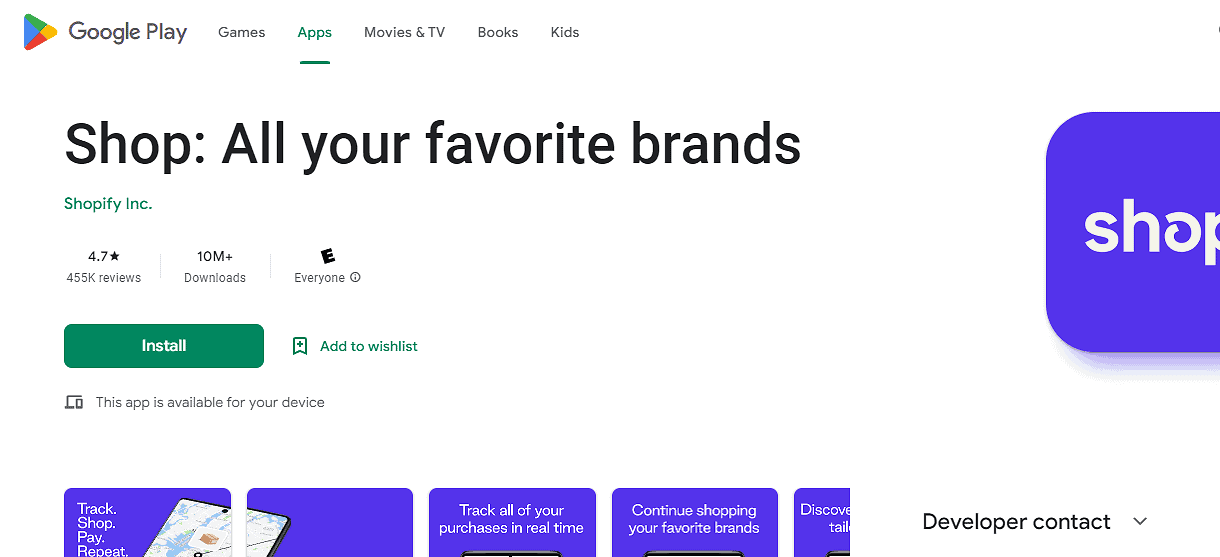
In a recent update, Shopify also announced integrating the app with its two sister platforms: Shop Pay and Shop Promise.
What is Shop Pay?
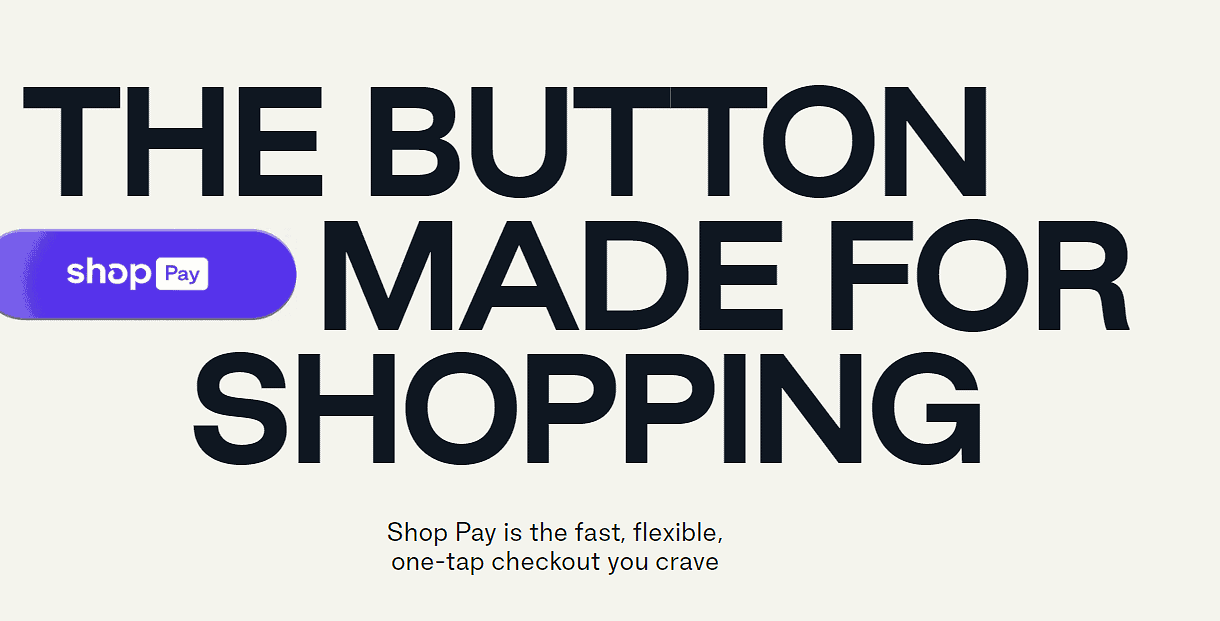
For e-commerce business owners, Shop Pay is a payment processor connecting Shopify’s system, allowing you to set different payment options.
For customers (non-business owners), the shop button offers a one-click checkout, making it easier to pay. This integrates with your online store and makes things quicker for customers who like online shopping.
This creates a similar billing system for the Shopify Shop marketplace and your official website storefront. This way, all your online orders are tracked through the same system, regardless of whether payments are made through your storefront or the shared marketplace environment.
How Does The Shopify Shop App Integrate With ChatGPT?
Similar to the new features of the Shopify Flow platform, the Shop App integrates with ChatGPT.
In practical use cases, the ChatGPT API is used to help answer buyer questions. It integrates a chatbot, or shopping assistant, directly with your website. This AI-drive system can answer questions and help shoppers find recommended products.
This offers the opportunity to create a socially-driven experience while shopping online. Offering personalized recommendations based on the customer experience means your chatbots can find products the customer might like faster.
Businesses worldwide can benefit from this new feature, potentially selling products faster. But, there are some drawbacks, as ChatGPT might not always provide appropriate recommendations (something a personal salesperson is more likely to do).
But, for business owners who cannot afford customer service agents, AI-driven tools are a great way to boost scalability. OpenAI’s software is still incredibly accurate compared to most AI alternatives.
Benefits of the Shop App
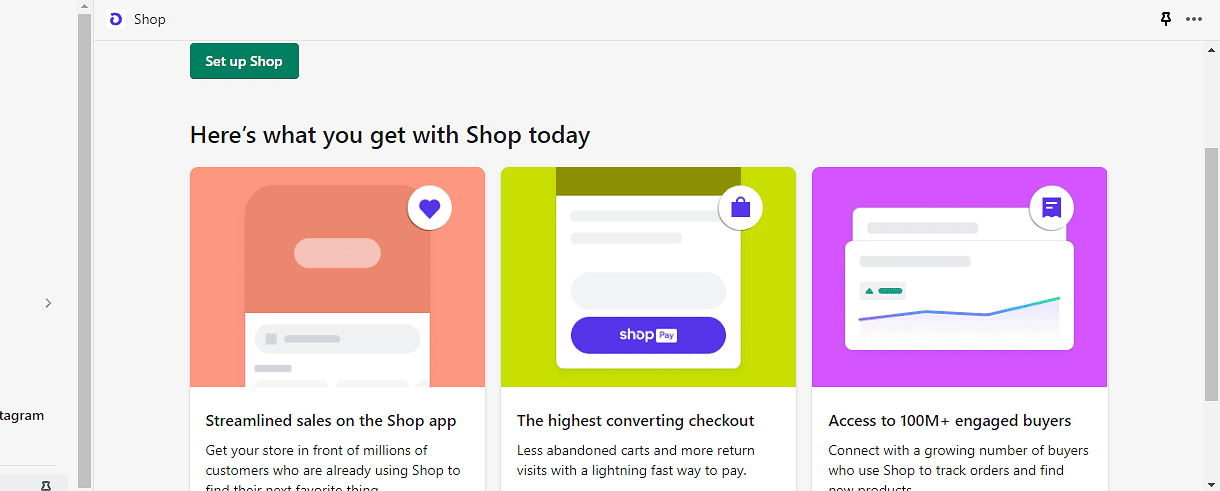
With the new shop app fully released, let’s see how it stacks up, starting with the benefits.
Easy way to keep customer billing info secure
The problem with using third-party payment options is the lack of trust. Because anyone can build an app, companies might use that leverage to get access to your data.
When getting an app directly through Shopify, you don’t have to worry about that. So, there is less inherent risk from this larger company, which must work harder to follow strict PCI compliance standards
Faster one-tap checkouts
Other third-party apps provide a one-tap checkout feature. But, it’s still an important aspect that makes the Shop App appealing.
Under the standard shopping method, it takes you multiple clicks to get to a checkout page. By this time, the shopper might’ve gotten bored, leaving you with an abandoned cart.
By creating an accelerated checkout experience, customers are more likely to buy. Online stores can benefit from this faster checkout.
Offers flexible payment options
Shopify’s Shop App integrates directly with Affirm loan services, a company that can split payments. This creates an additional incentive for customers to purchase from you, as splitting payments makes it seem more approachable.
Remember to account for Shopify’s and Affirm’s fees when using these apps. If you work with smaller profit margins, you must account for how it might increase your costs.
Includes “automagic package tracking”
The Shop App integrates directly with Shopify’s system, including its package tracking tools. The integration will also be customer-facing, helping them find where their packages are.
For customers who use the mobile Shop App, it gives them a new place to find their orders. While you still have to handle fulfillment yourself, it does take some of the duties from your hands.
Simplifies the online shopping experience
Shopify’s Shop App integrates the checkout experience for the mobile-facing marketplace application and your storefront. Customers familiar with Shop’s mobile app will know how to purchase from you.
This is why many e-commerce businesses use similar interfaces: simplicity. By providing this simplicity to your customers, you’ll field fewer questions about how to navigate your website.
It lets you reach new customers

One of the Shop App’s most prominent features is the ability to advertise locally. Customers can find local businesses that use the app through the online marketplace.
Customers can then use the marketplace to purchase online, drive to your store, and pick up the item. They’ll just need to provide the order details to you (found on the app) to prove their purchase.
The marketplace also provides a new digital avenue for you to be found on. With this, you can leverage Shopify’s larger marketing budget to direct traffic to your storefront.
Reduces the number of apps you need to install
With the Shop App, you only need to install one app to handle payment processing, shipment tracking, and a checkout page. This saves you a lot of room, as that would typically require installing three or more apps.
Installing fewer apps on your store means it will run faster. Google prioritizes websites with faster loading speeds. If you are bloated with an overabundance of website apps, you might have a weaker SEO (Search Engine Optimization) ranking than other businesses.
Organic traffic, through SEO, can be a great way to draw customers in from multiple digital channels. This lets you attract new customers who are more likely to buy from organic sources when compared to online advertising.
Drawbacks of the Shop App
Of course, not everything is perfect with the Shop App. Below, you’ll find out more about some of the concerns of using this platform.
Shopify can limit the items that appear on the marketplace
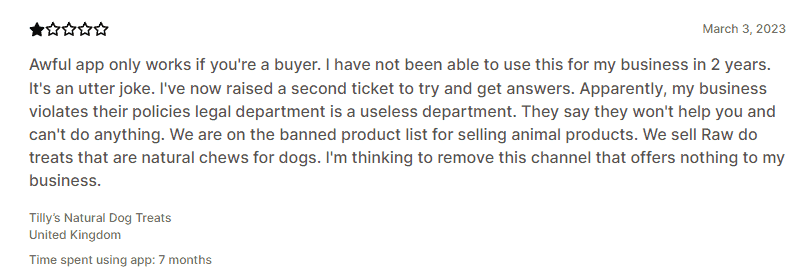
The image above shows one example of the Shop App’s limitations on what you can sell. Online sellers might become frustrated with the constraints of what they can sell.
In the example cited here, one shop owner reports being unable to sell raw meat in their dog treats. Independent businesses that sell “controversial” items are those hit the hardest.
Age-restricted products, hazardous materials, cannabis products, and mature content products are all examples. So, if you sell something Shopify doesn’t allow, you’ll have to look elsewhere.
Shopify also provides other limitations based on chargeback rates (no more than 1%) and those who have violated their policies in the past.
Online reviews are pretty concerning

Shopify has an overall rating of 1.9 stars as of my writing this article. Compared to other platforms, this is incredibly low.
Much of this frustration seems to come from people who cannot use the platform. Many people take to the comments section to air their issues. There also seems to be little recourse for some who try to appeal these decisions.
Many customers in the comment section also have used the review section to air general grievances with Shopify. With only 100 reviews, it’s hard to gauge if this is a real response to Shopify’s Shop App.
Ultimately, it is a factor in deciding on the Shop App for your needs. So, consider these reviews.
Limited to Shopify’s customization options
Shopify isn’t weak in the customization departments. Those who have used the website to build their own storefronts know this. However, the Shop app creates a homogenized mobile environment, which might not appeal to some designers.
You might find the Shop app to be a bit weak for storefronts that rely on dynamic design-focused marketing. So, while your customers can shop securely, they probably won’t be “wowed” by the logo and color you can pick for your marketplace storefront.
Alternative and supplemental apps for the Shop App
Ultimately, the ability to participate in multi-channel sales makes the Shop App, and these alternatives, powerful. So, if you want to look for some other options or supplements to target multiple storefronts, here are some suggestions:
Amazon by Codisto – Integrates your storefront with Amazon’s global marketplace.
Google channel – Integrates your storefront with Google shopping.
TikTok – Integrates with TikTok so you can participate in social selling
CedCommerce – Integrates with Facebook and Instagram for more social selling.
Ark – An integrated checkout, upsell, and survey platform that thanks customers after a purchase
Tapcart – A mobile app builder that focuses on boosting mobile conversions
Many of these alternatives have higher ratings and more experience than the Shop App. Shopify also creates some.
You can also browse the App Store to find other alternatives. Be sure not to install too many apps, as it might slow down your website.
Is The Shopify Shop App Worth It?
When you want to help customers shop online, it helps to give them options. Multi-channel selling is essential; the Shop App can provide this experience.
The Shop App’s most powerful features come down to access to another online marketplace and an integrated checkout experience. The new marketplace by itself makes this app incredibly powerful.
While the app has few customization options, you can still stand out. Creating a dynamic logo and unique products isn’t beyond your scope. Customers might find your products among their favorite brands.
You can also target people locally, a unique feature of the Shop app. Social selling platforms, like Facebook, focus more on keeping people on the website while shopping (not getting people into your store.
So, unless your store sells something on the restricted list, there’s no reason why you shouldn’t pursue it. And, as ChatGPT continues its integration with Shopify, you can expect more features with the shopping assistant.
Please read our article on Shopify Flow for more information on how ChatGPT integrates with Shopify. In automating and scaling your business, Shopify has a lot of different options that are worth exploring.
Read Our Full Shopify ReviewBenjamin Shemesh is an ecommerce enthusiast and a digital marketing expert.
He loves surfing the ocean
